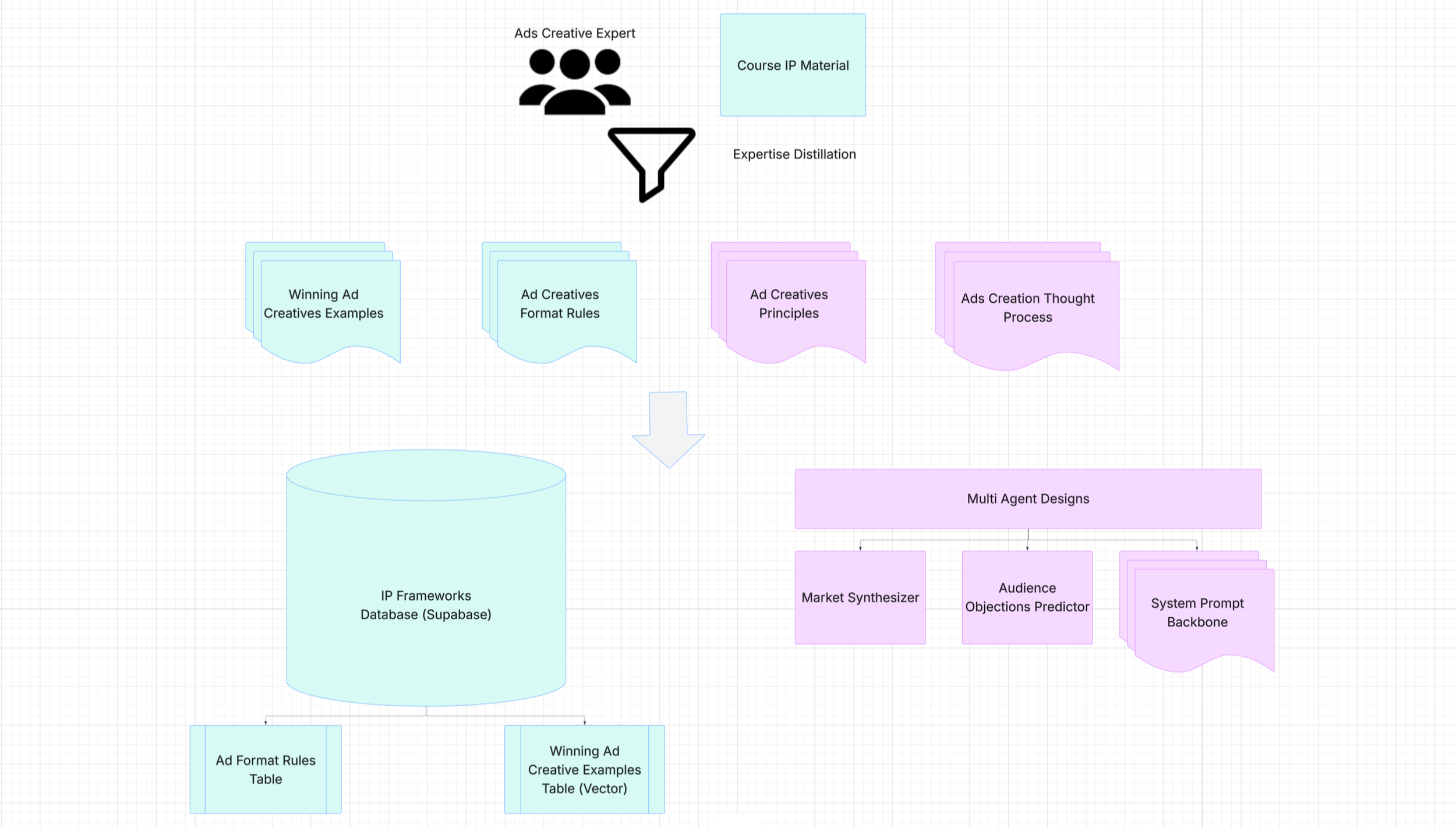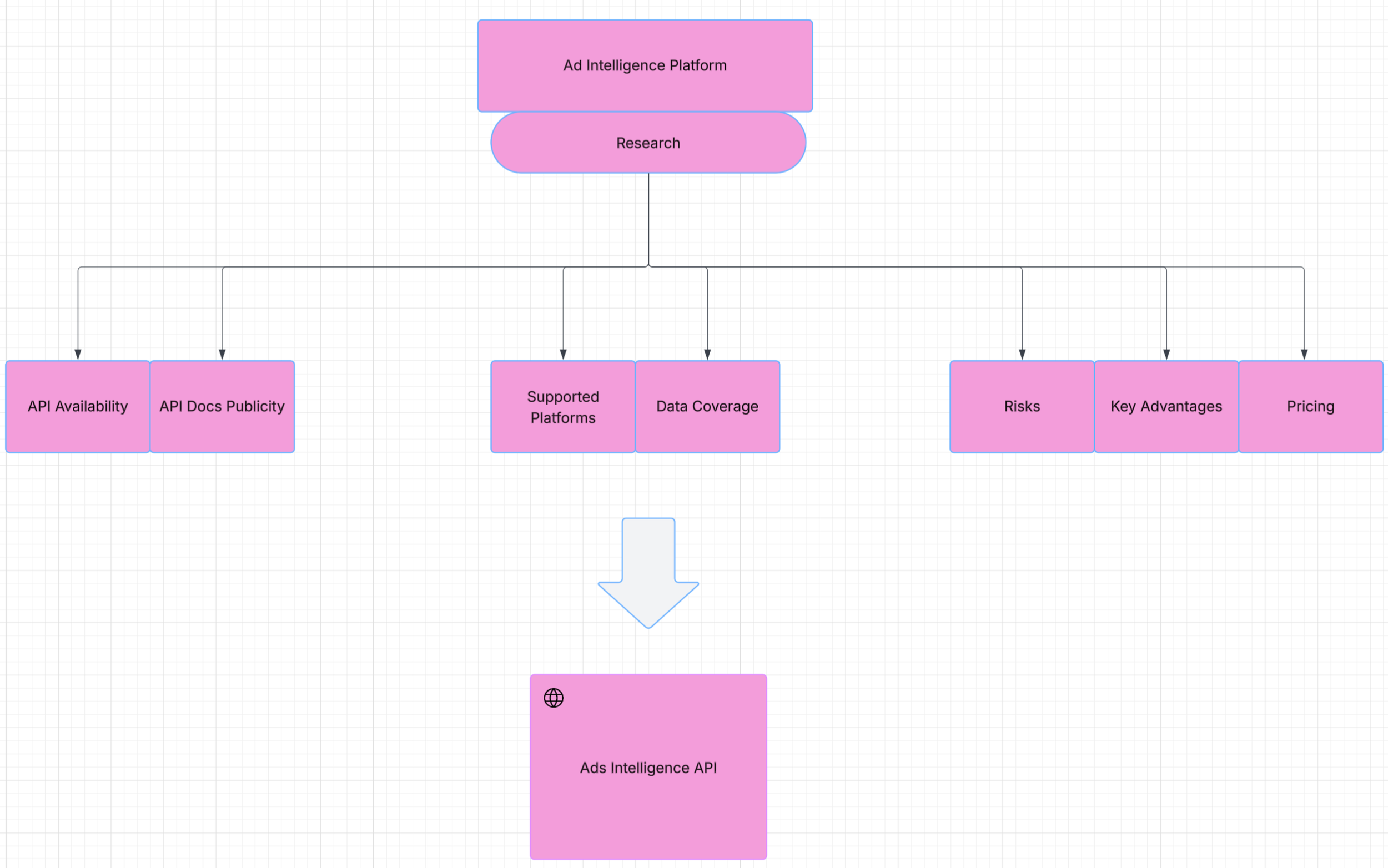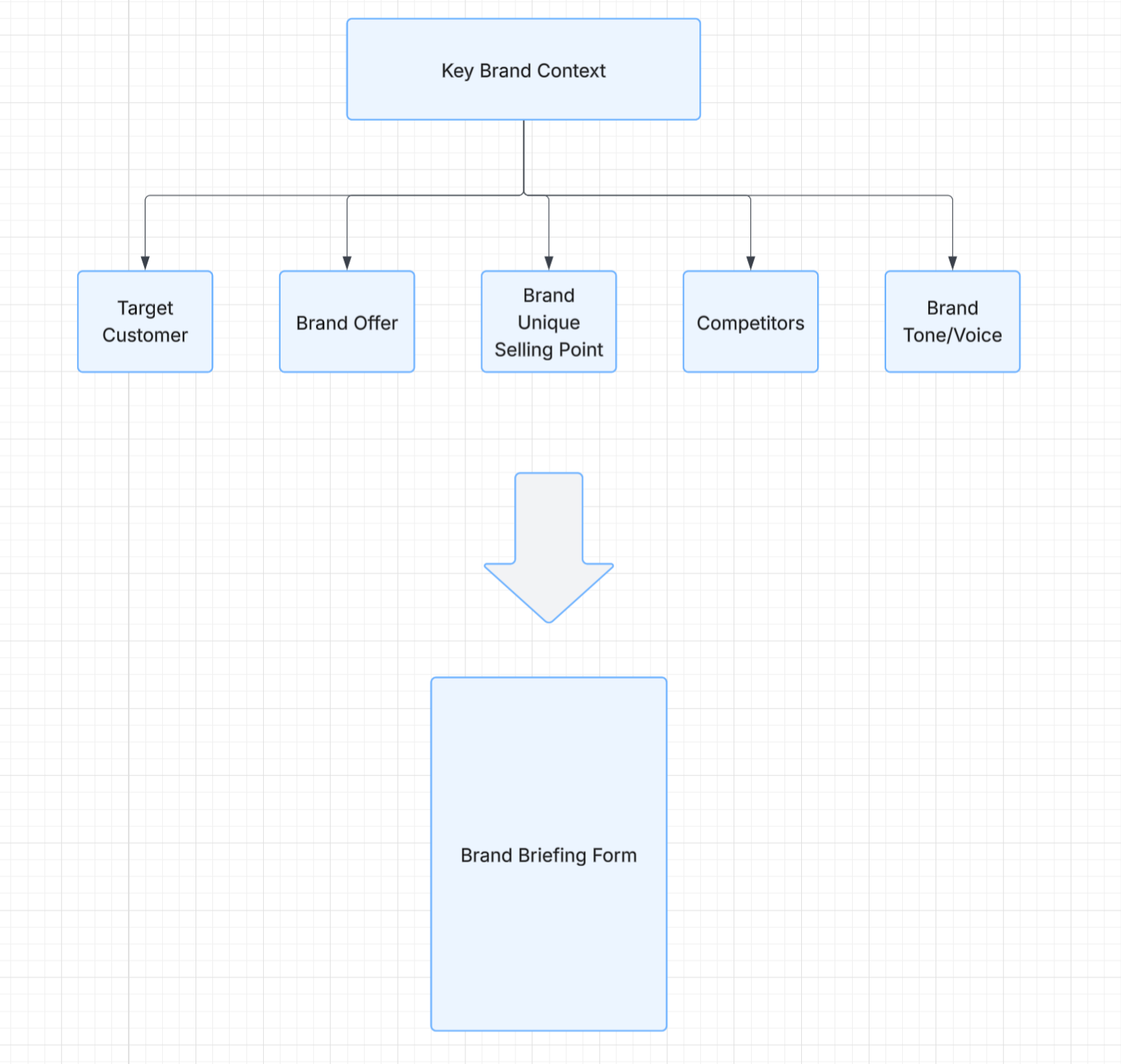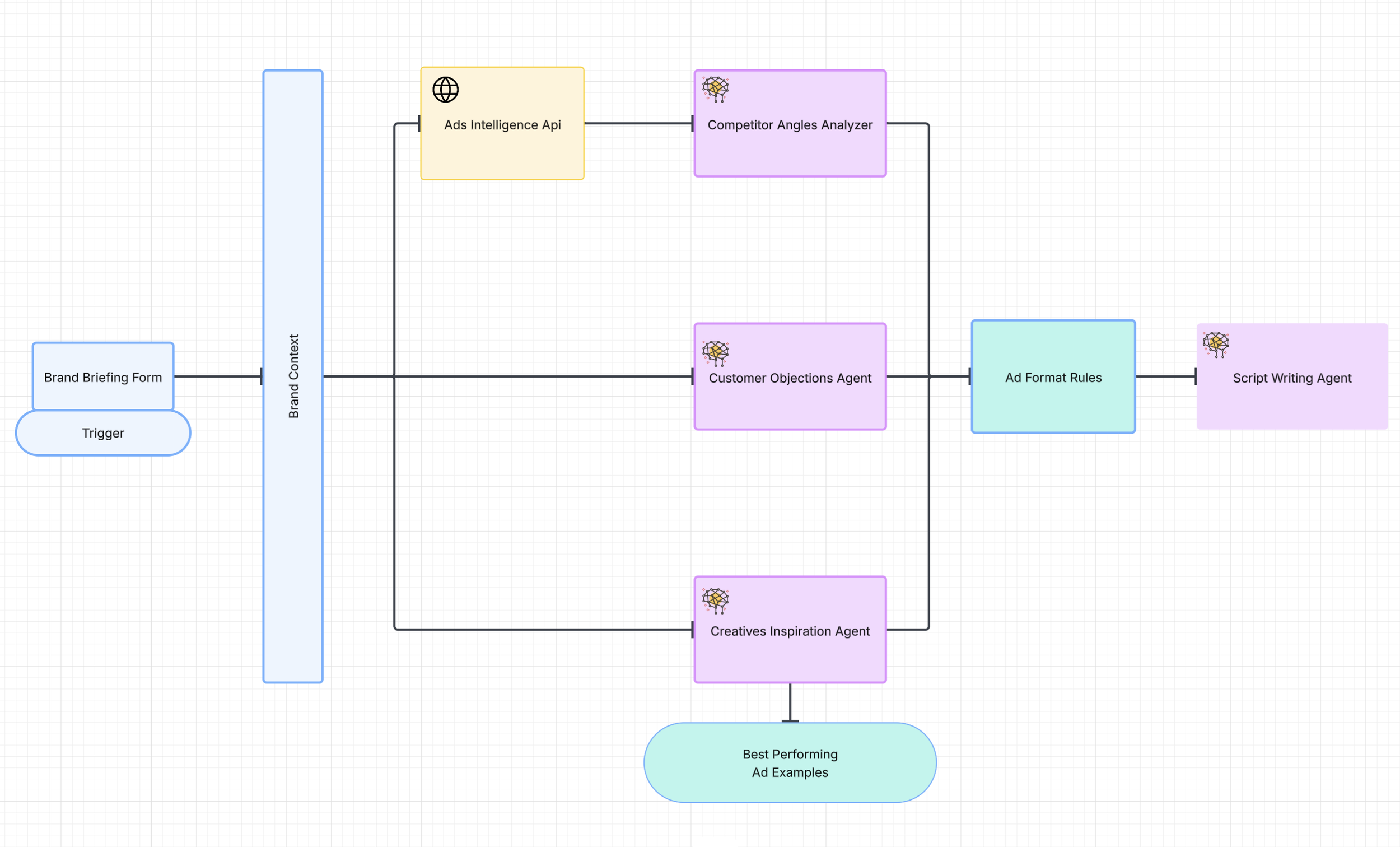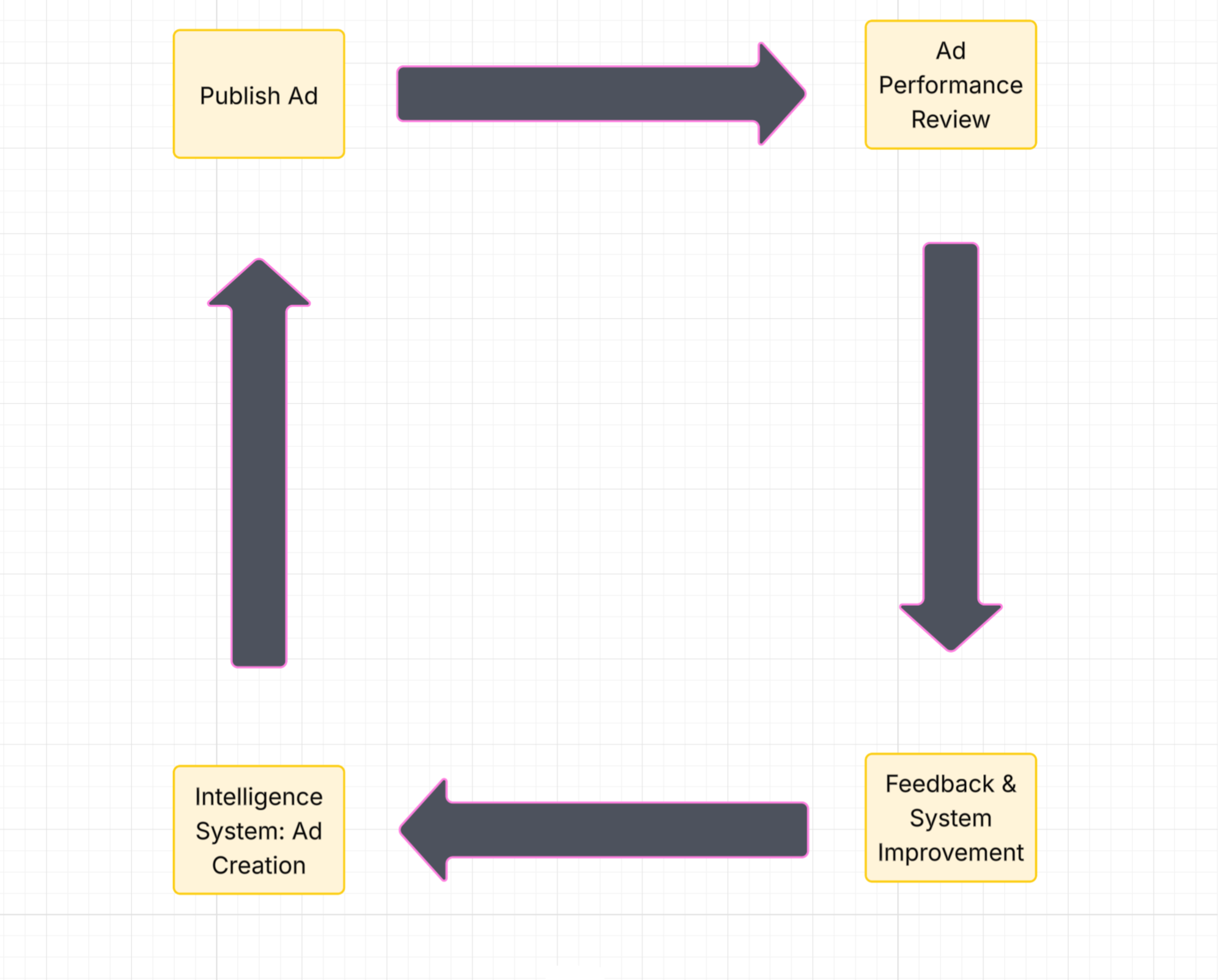
Codifying Creative Intelligence Into a Scalable System
The Expertise Bottleneck
An E-commerce Growth Consultancy was facing a classic, and commercially critical, "Expertise Bottleneck." Their single greatest value-generating asset, their proprietary methodology for creating world-class ad creatives, was simultaneously a source of their market advantage and primary bottleneck to their future growth.
This priceless, creative intelligence was trapped in two, unscalable forms:
The intuitive, "gut-feel" knowledge of their Marketing Creative Experts.
The passive, static format of their video course IP.
The founder, with immense ambition, had already attempted to solve this problem himself using the commodity tools of the market (custom GPTs), and he had correctly, and painfully, discovered that these simple tools were incapable of capturing the nuanced, "PhD-level" Intelligence and creative insight required to create high-quality ad creatives at scale.
They were sitting on a mountain of gold, with no industrial-grade machinery to mine it.
System-Focused Approach
They were drowning in ambition, knowing there was a vast amount of potential they were sitting on, with no understanding or roadmap of the full capabilities of AI.
With the market being saturated with simplistic, "one-size-fits-all" solutions, our initial audit concluded that any "tool-first" approach was doomed to fail.
The challenge was not technical; it was architectural.
The architectural decision was clear: we would not build another simple tool. We would lead a process to create a Reasoning System, a fusion of their Core IP and Codified Expertise as Fuel, an Reasoning System as the Engine, and a re-designed Human-AI Process.
Foundational Audit:
Architectural Blueprint
Our engagement began with our foundational first phase: the Foundational Audit. This paid sprint lasted four weeks and was a program designed to achieve absolute, ground-truth clarity on the data, workflow, roles, and tools before a single line of code was written.
The outcome of this phase was an Architectural Blueprint, a clear roadmap on the path to a successful Reasoning System deployment.
This was a deep, strategic, and collaborative process to:
Codify the Expertise: Perform a deep Expertise Distillation with their Marketing Lead, transforming their knowledge into a formal Knowledge Codex.
Design the Engine: Design a multi-agent system that takes in multiple sources of information to replicate this expertise.
Augment the Human: Design a new, Human-AI Collaboration Protocol to elevate their team into strategic Pilots.
Codifying Creative Intelligence
The first stage of the Foundational Audit was about distilling the raw expertise of their Marketing Lead and structuring the data into a format that AI could accurately execute on.
What began as intuition and static course IP was transformed into a living knowledge architecture:
Expertise Distillation: We formalized the implicit knowledge of the Ads Creative Expert and cross-referenced it with their proprietary training materials.
Codified Principles & Rules: That knowledge was turned into Ad Creative Principles, Format Rules, and Designs for the Multi-Agent System, creating a backbone that could be consistently applied.
IP Frameworks Database: We structured the schema for a Supabase-powered knowledge base that would contain both symbolic rules (format tables) and vectorized creative examples.
This process turned scattered expertise and static material into a repeatable, machine-readable system. Instead of relying on one person’s intuition, the company now had an IP engine, a permanent creative foundation that scaled beyond the limits of human memory and stamina.
Real-Time Market Analysis
Creative strategy in advertising isn’t static; it’s alive, shifting daily with competitor moves, customer behavior, and cultural trends. A system built only on past knowledge would quickly drift out of sync with reality.
This is why we extended the Reasoning System with a real-time market analysis layer.
We performed a rigorous research sprint to identify the best platform to use as the information stream for the latest market insights. We analyzed availability, platform coverage, and data fidelity.
This allowed us to add a continuous stream of market signals into the creative process, transforming it from a closed-loop system into a market-responsive engine.
Now, instead of relying solely on the Marketing Director’s static heuristics, the system is able to detect live shifts in competitor tactics, identify new winning creative formats, and anticipate risks and objections before they even show up in campaign performance.
The result: ad strategies that are not just grounded in expertise, but calibrated to the pulse of the market in real time.
Brand Contextual Guidance
One of the most important conclusions of the audit was that no matter how advanced the system became, it could not lose the directional influence of the brand itself.
Creative excellence isn’t just about structure or efficiency; it’s about alignment. Every ad needed to reflect the company’s voice, offer, positioning, and competitive edge. Without this, the system risked becoming fast but directionally lost.
To solve this, we designed a Brand Briefing Form, a structured mechanism for the creative experts to input the key elements of brand identity:
Target Customer
Core Offer
Unique Selling Proposition
Competitive Landscape
Tone and Voice
This briefing form became the north star of the entire Reasoning System. By capturing brand DNA upfront, every downstream agent was constrained and guided by a shared, machine-readable source of truth.
The result was a system that didn’t just scale creativity, but did so without losing the distinctiveness of the brand.
The Engagement Phase
Reasoning System
Once the core intelligence sources were codified, the next step was to design the Reasoning System itself, the operational engine that fuses expertise, market context, and brand direction into a repeatable, defensible process.
The central design challenge was not “can AI generate copy?”, but
“How can we structure multiple streams of intelligence so that the system consistently prioritizes the right influences in the right order?”.
Without this, output would either collapse into generic scripts or overweight a single factor at the expense of balance.
The solution was a multi-agent system orchestrated around three pillars of influence:
The Market (Competitor Angles Analyzer): Continuously auditing live ad intelligence APIs to surface competitor strategies and emerging creative angles.
The Audience (Customer Objections Agent): Anticipating and addressing the most common points of friction, ensuring every script preemptively disarms resistance.
The Spark (Creatives Inspiration Agent): Drawing from a curated library of high-performing ad examples to ensure the creative spark is grounded in proven, real-world performance.
These intelligence streams were constrained and guided by the Brand Briefing Form, which injected the brand’s unique voice, offer, and positioning into the system.
The combined outputs were synthesized into a single set of Ad Format Rules, a master blueprint that governs the final creative. From there, the Script Writing Agent executed with technical precision, generating on-strategy scripts at scale.
This was not “AI copywriting.” It was a structured, cognitive manufacturing process, one that turned scattered creative intuition into a scalable, defensible system.
AI-Augmented Process
The Traditional Process
The Traditional process was slow, linear, and unscalable. The Marketing Team was a single point of failure, responsible for every stage: the manual research (Strategic Definition), the messy first draft (Draft Creation), and the endless, low-leverage revisions (Curation & Refinement).
The AI-Augmented Process
At its core, this system wasn’t about replacing human creativity; it was designed to be about remapping the human role to focus only on the highest-leverage actions, transforming the traditional linear slog process into four sharp, machine-assisted stages:
Strategic Definition: the human sets direction.
Automated Reasoning: the system does the heavy lifting.
Draft Creation: Ads are generated in bulk, instantly.
Curation & Refinement: the human applies taste, judgment, and final polish.
Publish: ads go live, backed by both brand DNA and live market intelligence.
Instead of spending 7–10 hours to produce 2–3 ads, the Creatives team can now produce the same volume in under an hour, but with far greater strategic depth.
Process Comparison
Human AI Collaboration
The final layer of the system wasn’t technical, it was behavioral. We had to answer a simple but key question:
Where does the human create the most leverage in this new process?
The old model positioned the Marketing Director as a high-intensity direct worker: drafting, redrafting, and revising until exhaustion. In the new model, the human’s role is elevated to pilot and strategist.
The Human-AI Collaboration Protocol (HICP) was designed as a cyclical flywheel:
Publish Ad: The system outputs fully-formed ad scripts, and the human signs off on quality.
Ad Performance Review: Once live, the ad’s real-world results become data.
Feedback & System Improvement: The human interprets this performance, reframes it as strategic input, and provides a new brief.
Reasoning System: Ad Creation: The system ingests this feedback, generates fresh variations, and the cycle restarts.
This cycle ensures the asset doesn’t just produce ads; it learns and compounds.
The human isn’t trapped in the weeds; their contribution is focused on what only they can do: interpreting market feedback, reframing strategy, and deciding the “next hill to climb.”
Closing Insight
This engagement showed what’s possible when AI is treated not as a shortcut or a magic box, but as architecture.
What was once a fragile, expert-dependent workflow became a scalable Reasoning System, codified, defensible, and compounding with every cycle of use.
And it also signifies a glimpse into the future: organizations no longer bound by the limits of individual expertise, but powered by systems that transform knowledge into an industrial-grade asset.
If you’d like to learn more about how you can scale the expertise of your organization, schedule a meeting today.
